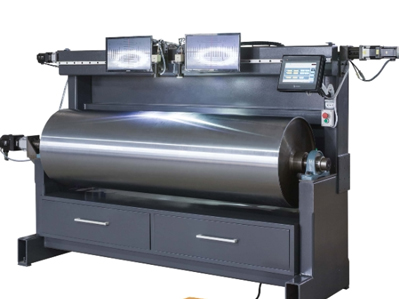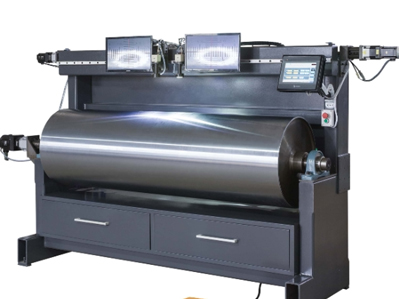Blog

The auto print plate cylinder mounter is of great significance for printing quality and efficiency. Scientific maintenance can ensure its precise operation and extend its service life. This article details the key points and procedures of maintenance.

I. Preface
The auto print plate cylinder mounter is an important part of the printing production line. Whether its performance is stable or not is directly related to the printing quality and production efficiency. Appropriate and regular maintenance can effectively prevent malfunctions, reduce maintenance costs, and ensure the long-term and reliable operation of the equipment. The following will elaborate on the key points of maintenance for the auto print plate cylinder mounter.
II. Daily Cleaning and Inspection
(I) Surface Cleaning
1.After the daily work is completed, use a clean and soft cloth to wipe the external surface of the equipment to remove ink, dust and other stains, keep the body clean, and prevent impurities from entering the inside of the equipment and affecting the normal operation of mechanical and electrical components.
2.Focus on cleaning the plate mounting area of the print plate cylinder to ensure that there is no residual ink, plate debris, etc., so as to avoid scratching the printing plate or affecting the plate mounting accuracy during the subsequent plate mounting process.
(II) Component Inspection
1.Check the surface condition of the print plate cylinder to see if there are bumps, deformations or wear marks. If there are any abnormalities, record them in time and evaluate the necessity of repair or replacement. Meanwhile, check the axial and radial runout of the cylinder. If the runout exceeds the allowable range, it is necessary to adjust or repair the installation of the cylinder and components such as bearings.
2.Check whether the plate mounting fixture is loose, deformed or damaged, and check whether the clamping force of the fixture is normal. This can be judged by a simple pull test or by comparing with the standard clamping force. If the clamping force is insufficient, it is necessary to adjust or replace components such as springs and bolts of the fixture.
3.Check the tension and wear conditions of transmission components such as chains, belts and gears. The tension of chains and belts should be moderate. If it is too loose, it is easy to cause slipping, which will affect the transmission efficiency and plate mounting accuracy; if it is too tight, it will increase component wear and the load on the motor. If it is found that the chains or belts are loose, the tensioning device should be adjusted in time; if there are signs of damage such as wear and cracks, they should be replaced in time. For gears, check whether the tooth surfaces are worn or peeled off and whether the meshing is normal. If there are problems, they should be repaired or replaced in time.
III. Maintenance of Mechanical Components
(I) Maintenance of Print Plate Cylinder
1.Lubricate the bearings of the print plate cylinder once a week. Use appropriate bearing grease and add it according to the specified dosage and method to ensure that the bearings work in a good lubrication environment, reduce friction and wear, and extend the service life of the bearings.
2.Regularly check the balance performance of the print plate cylinder. Professional balance testing equipment or simple vibration testing methods can be used. If it is found that the cylinder is unbalanced, it may cause uneven stress on the printing plate during plate mounting, resulting in loose installation or even damage to the printing plate. At this time, dynamic balance correction of the cylinder is required.
(II) Maintenance of Transmission System
1.Clean and lubricate the transmission chain every two weeks. First, use a cleaner to remove oil stains and impurities on the chain, and then apply an appropriate amount of special chain lubricant to make the chain run smoothly and reduce wear and noise.
2.Check the transmission gearbox once a month. Open the gearbox cover, check the meshing condition of the gears, the wear degree of the tooth surfaces, and the quality and quantity of the lubricating oil in the box. If the lubricating oil has deteriorated or the quantity is insufficient, it should be replaced or added with appropriate lubricating oil in time to ensure the good lubrication and normal operation of the gears.
3.Regularly check the belt drive system to check the wear condition and tension of the belt. If it is found that the belt is seriously worn or cracked, it should be replaced in time; if the belt is loose, adjust the tension pulley to keep the belt at an appropriate tension to ensure the transmission efficiency and stability.
(III) Maintenance of Plate Mounting Fixture and Positioning Device
1.Before each plate mounting operation, check the positioning accuracy of the plate mounting fixture. This can be verified by installing a standard test plate to check whether the fixture can accurately fix the printing plate at the predetermined position. If positioning deviation is found, it is necessary to check whether components such as positioning pins and positioning blocks of the fixture are loose or worn, and adjust or replace them in time.
2.Conduct a comprehensive inspection and maintenance of the clamping mechanism of the plate mounting fixture once every two months. This includes checking the working performance of the clamping cylinder (if it is a pneumatic fixture) or the clamping motor (if it is a electric fixture), testing whether the clamping force is stable and reliable; checking whether the mechanical transmission parts of the fixture such as lead screws, nuts and connecting rods are flexible and smooth. If there is any jamming or wear, they should be repaired or replaced in time.
3.Regularly clean and calibrate the sensors of the positioning device, such as photoelectric sensors and proximity sensors. Use a clean soft cloth to wipe the surface of the sensors to remove dust, oil stains and other pollutants to prevent affecting the sensitivity and accuracy of the sensors. Meanwhile, calibrate the sensors according to the requirements of the equipment manual by using standard calibration tools to ensure that they can accurately detect the position information of the printing plate and the cylinder and provide a guarantee for the precise control of the plate mounting machine.
IV. Maintenance of Electrical System
(I) Maintenance of Control System
1.Check the operation panel of the control system every day to see if the keys are sensitive and if the display screen shows information normally, such as equipment status, parameter setting, and fault alarm. If it is found that the keys are not working properly or the display screen shows abnormalities, the cause of the malfunction should be checked in time. It may be due to poor contact of the keys, damage to the display screen or internal circuit failure of the control system. Repair or replace the corresponding components according to the specific situation.
2.Clean the internal circuit of the control system once a week. Use compressed air or a small vacuum cleaner to remove dust on the circuit board to prevent dust accumulation from causing short circuits or poor heat dissipation of components. Meanwhile, check whether the electronic components on the circuit board have phenomena such as overheating, discoloration, bulging or loose solder joints. If any abnormalities are found, replace the faulty components in time and conduct a comprehensive test on the control system to ensure its normal operation.
(II) Maintenance of Motors and Sensors
1.Conduct a comprehensive inspection of the motors once a month. This includes an external inspection of the motors to see if there are any damages to the housing or damage to the fan; checking the bearings of the motors to see if there are abnormal noises, overheating or looseness. If there are problems, the bearings should be replaced in time. Check the brushes (for brushed motors). If the brushes are seriously worn, they should be replaced in time to ensure the normal commutation and operation of the motors. Meanwhile, use a multimeter to measure the resistance value of the motor windings to determine whether there are short circuits or open circuits in the windings. If there are faults, the motors should be repaired or replaced.
2.Clean and calibrate the sensors once every two weeks. As mentioned above, after cleaning the surface of the sensors, conduct corresponding calibration work according to different types of sensors. For photoelectric sensors, use standard light-blocking and light-transmitting sheets for sensitivity testing and calibration; for proximity sensors, use standard metal or non-metal blocks for sensing distance testing and calibration to ensure that the sensors can accurately perceive the running state and position information of the equipment and provide reliable feedback signals for the control system.
V. Regular In-depth Maintenance
(I) Disassembly and Maintenance of Mechanical Components
1.Conduct a comprehensive disassembly and maintenance of the mechanical components of the print plate cylinder mounter once every six months. Disassemble the main mechanical components such as the print plate cylinder, transmission components and plate mounting fixtures one by one for in-depth cleaning and inspection.
2.Use special cleaners and tools to thoroughly remove oil stains, impurities and old grease from the disassembled components. Check the wear conditions of each component, such as the wear depth of the cylinder surface, the wear degree of the tooth surfaces of the transmission gears, and the wear condition of the clamping surfaces of the plate mounting fixtures. Determine whether repair or replacement is needed according to the wear degree.
3.When reassembling all the disassembled mechanical components, strictly follow the assembly process requirements of the equipment to ensure that each component is installed correctly and firmly, and the assembly accuracy meets the requirements. During the assembly ,add an appropriate amount of grease or lubricating oil to the connection parts and moving parts to ensure that the equipment can work smoothly and stably after being restarted.
VI. Maintenance Record and Management
1.Establish a complete equipment maintenance record file. Every time the auto print plate cylinder mounter is maintained, record detailed information such as the date of maintenance, content, replaced components, inspection results and maintenance personnel.
2.Regularly analyze and summarize the maintenance records. Through the analysis of the equipment operation data and maintenance situation, find out the potential problems and failure patterns of the equipment, formulate preventive measures and maintenance plans in advance, optimize the maintenance strategy of the equipment, and improve the reliability and service life of the equipment. For example, if it is found that a certain component frequently fails, consider stocking up on this component in advance or adjusting the operating parameters or operation methods of the equipment to reduce the occurrence of failures.
By strictly following the above maintenance instructions for the auto print plate cylinder mounter, it can be ensured that the equipment is always in a good operating state, providing stable and reliable support for printing production, improving the production efficiency and product quality of printing enterprises, and reducing the operation cost and maintenance risk of the equipment.
Latest News
Exhibition 2023 labelexpo Asia
The 2023 labelexpo Asia show we participated in in December was a complete success. I am v...
Jun 14,2024
Advantages of Honeycomb Paper Cutting Machines1. Efficiency and Speed: Automates the cutti...
Mar 28,2025
Flexographic printing machine are maintained through daily maintenance, regular maintenanc...
Mar 06,2025
GET A QUOTE